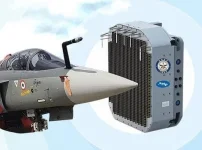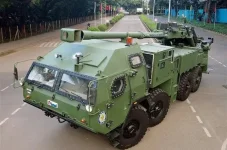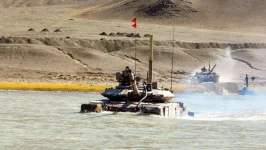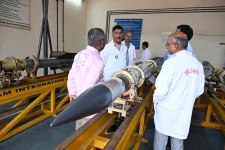- Views: 2K
- Replies: 4
The Sukhoi Su-30MKI is the undisputed backbone of the Indian Air Force (IAF), with a massive fleet of over 260 jets dedicated to air superiority and strike missions.
This formidable platform is now set for a revolutionary transformation under the "Super Sukhoi" upgrade programme. The initiative centres on reducing the aircraft’s Radar Cross-Section (RCS) using indigenous radar-absorbent material (RAM) technology.
Recent trials have shown that this upgrade could significantly lower the jet’s visibility to enemy sensors, effectively transforming a large target into an elusive aerial predator.
This stealth capability is critical for survivability in the heavily contested airspace of the Indo-Pacific. A lower radar signature would allow the Su-30MKI to penetrate deeper into territories protected by sophisticated air defence systems, such as those operated by China, and would provide a decisive edge in potential conflicts on the western front.
However, the programme faces a significant hurdle: time. With delivery timelines extending into the 2030s and the IAF’s squadron strength falling to roughly 31 against a sanctioned strength of 42, there are growing concerns.
Defence experts are questioning whether this retrofit can be deployed fast enough to maintain air dominance before the arrival of next-generation stealth fighters.
The Science of Invisibility
At its most basic level, RCS is a measure of how visible an aircraft is to radar; it effectively represents the "size" of the aircraft as seen by a sensor. A larger RCS makes an aircraft easier to detect and track, giving the enemy more time to launch a counter-attack.The standard Su-30MKI, with its large canards, open engine intakes, and external weapon mounts, has a frontal RCS estimated between 4 and 12 square metres (m²).
This makes it vulnerable to detection at ranges of 200–300 km by advanced surveillance systems like China’s JY-27V. In comparison, true stealth aircraft like the F-35 have an RCS of roughly 0.001–0.1 m², allowing them to remain undetected until they are much closer to the target.
To bridge this gap, the Defence Laboratory Jodhpur (DLJ), a premier DRDO facility, has developed a cutting-edge polyurethane-based RAM paint. This advanced coating is infused with magnetic fillers capable of absorbing radar waves in the X-band and S-band frequencies.
Crucially, it is engineered to withstand the extreme environments of India's operational areas, from the freezing -40°C temperatures of the Himalayas to the scorching +55°C heat of the desert.
The upgrade involves applying this paint to high-reflection areas—such as engine nacelles, leading edges, and pylon fairings—and using special sealants to reduce radar scattering. This modular approach allows the aircraft to be upgraded without major structural changes, adding only 50–100 kg of weight.
A Force Multiplier in Combat
Current trials aim to reduce the frontal RCS of the Su-30MKI by 50–70%, potentially bringing it down to 1–3 m². While this does not make the jet "invisible" in the same way as a fifth-generation fighter, the tactical advantage is immense.Radar physics dictates that detection range is determined by the fourth root of the RCS; therefore, a 75% reduction in RCS could cut the enemy's detection range by nearly half, to around 100–150 km.
This reduction buys Indian pilots vital time to launch Astra Mk2 Beyond Visual Range (BVR) missiles before they are targeted themselves.
The upgrade package extends beyond just stealth materials. The "Super Sukhoi" will feature the indigenous Virupaksha Active Electronically Scanned Array (AESA) radar, which utilizes Gallium Nitride (GaN) technology to detect targets over 400 km away.
It will also be equipped with a potent indigenous electronic warfare (EW) suite. This suite reportedly features the Dhruti DR-118 digital Radar Warning Receiver (RWR) and advanced self-protection jammers, creating a "4.5+ generation" hybrid fighter that is hard to detect and capable of blinding enemy sensors.
Strategic and Economic Impact
For the IAF, which relies on the Su-30MKI for 80% of its combat operations, this upgrade changes the rules of engagement.In a theatre dominated by networked enemy radars and stealth platforms like the J-20, a reduced-signature Su-30MKI can engage from safer distances, enforcing a "first-look, first-kill" doctrine.
Furthermore, the technology has wider implications: it enhances the export potential of the upgraded jets to friendly nations and contributes vital research data for the upcoming Tejas Mk2 programme, supporting India's target of ₹24,000 crore in defence exports for FY25.
| Metric | Baseline Su-30MKI | Upgraded "Super Sukhoi" | Tactical Advantage |
|---|---|---|---|
| Detection Range | 250–300 km | 120–180 km | 40–50% less warning time for enemy |
| Engagement | Enemy fires first (at 150 km) | IAF fires first (at 120 km) | +30% kill probability |
| EW Capability | Vulnerable to jamming | Integrated Indigenous Suite | 2x endurance in hostile airspace |
| Cost Efficiency | N/A | ₹2–3 crore (RAM application) | 70% cheaper than buying new stealth jets |
The Race Against Time
Despite the promise of this technology, the timeline for mass adoption is tight. The upgrade programme, which received initial clearance for 84 jets in 2023 and plans to expand to the wider fleet, is not expected to deliver the first operational jets until around 2030.Full combat readiness may not be achieved until 2032. This schedule overlaps with the rollout of the Advanced Medium Combat Aircraft (AMCA) prototypes but clashes with the immediate reality of a squadron shortage.
Critics argue that upgrading a 1990s airframe is merely a stopgap measure. Even with better stealth materials, the Su-30MKI's external weapon loads will spike its radar signature during combat.
By the time the "Super Sukhoi" fleet is ready in 2032, adversaries may have fielded hundreds of newer stealth platforms, potentially outpacing India's upgraded fleet. Additionally, the retrofit process takes months per aircraft, temporarily removing them from active duty at a time when every jet counts.
Proponents, however, maintain that the programme is a pragmatic necessity. The upgrade consortium, led by HAL and DRDO with private sector support, ensures high indigenous content and keeps the fleet lethal.
As Air Chief Marshal A.P. Singh emphasised at Aero India 2025, the Super Sukhoi programme is essential to "keep our spine strong" until India’s indigenous fifth-generation fighters are ready to take to the skies.





